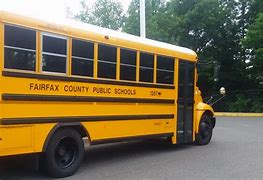 by James C. Sherlock
by James C. Sherlock
I wrote on February 12 of this year about what I consider an indicator of a potential overreach by the Fairfax County Public Schools (FCPS). FCPS security has published an RFP for corporate support for web search to support its threat assessment team.
Since that article, I have conducted extensive email exchange with Donna Michaelis, Director of the Virginia Center for School and Campus Safety at the Department of Criminal Justice Services (DCJS). She is a dedicated public servant responsible for policy in this area. She gave me a lot of her time. It has proven an informative exchange and I thank her for it.
I see three gaps in current law and policy on school threat assessment teams.
They both set school divisions up to make mistakes that may possibly compromise any case that may be built against an actual threat and can permit them to overreach on matters that they should leave to law enforcement:
- Virginia law and policy fail to define roles and responsibilities
- on school threat assessment teams between law enforcement and school system personnel on the teams; and
- between school systems and law enforcement agencies.
- They set no clear limits on what types of “individuals” are within the scope of school investigations.
- Finally, there is no requirement that the school division threat assessment oversight teams as currently constituted under Virginia law have the expertise to deal with the legal complexities involved.
Virginia law on school threat assessment teams and its supporting guidelines deal with legal issues by avoiding them. Code of Virginia § 22.1-79.4 requires
“A. Each local school board shall adopt policies for the establishment of threat assessment teams, including the assessment of and intervention with individuals whose behavior may pose a threat to the safety of school staff or students consistent with the model policies developed by the Virginia Center for School and Campus Safety (the Center) in accordance with § 9.1-184.
B. The superintendent of each school division may establish a committee charged with oversight of the threat assessment teams operating within the division, which may be an existing committee established by the division. The committee shall include individuals with expertise in human resources, education, school administration, mental health, and law enforcement.
C. Each division superintendent shall establish, for each school, a threat assessment team that shall include persons with expertise in counseling, instruction, school administration, and law enforcement.”
No attorney is required or even recommended. Legal issues for the threat assessment teams include but are not limited to:
- Family Educational Rights and Privacy Act (FERPA)
- Duty to warn
- Civil rights and anti-discrimination laws
- Foreseeability and Negligence
- Professional Immunity
- 1st Amendment (Free Speech)
- 4th Amendment (Search & Seizure)
- 14th Amendment (Due Process)
Threat Assessment and Management
in Virginia Public Schools: Model Policies Procedures and Guidelines (Model Policies) on page 93 lists 36 Virginia laws with which the threat assessment team must comply.
It is unrealistic and unfair to expect a sheriff’s deputy or policeman to be an authority on each of those issues.
The solution seems straightforward.
Modify § 22.1-79.4. and Model Policies
- to define roles and responsibilities of each member of any threat assessment team and between school divisions and law enforcement agencies;
- to require representation from the local Commonwealth Attorney’s office on the threat assessment oversight team of each school division; and
- to clearly define what “individuals” are within the scope of an investigation by a school threat assessment team.

Leave a Reply
You must be logged in to post a comment.